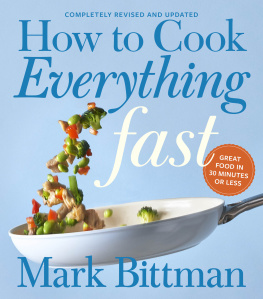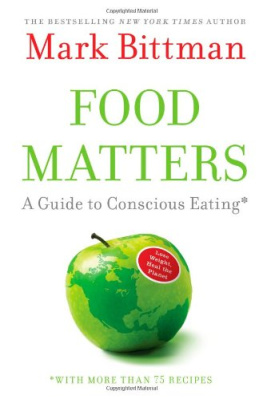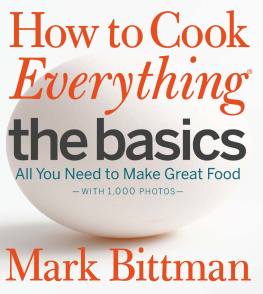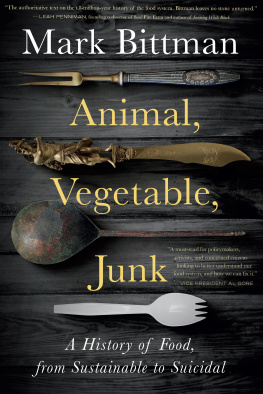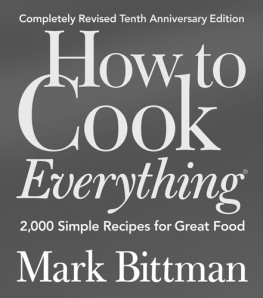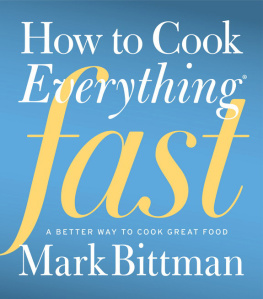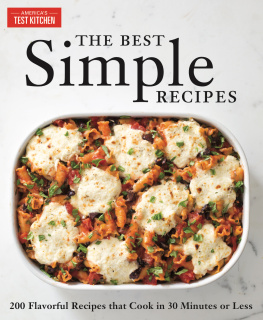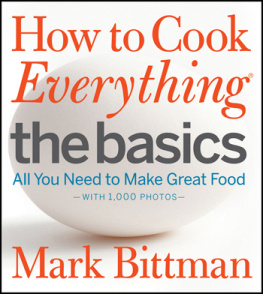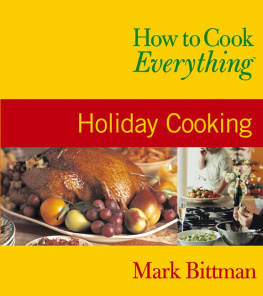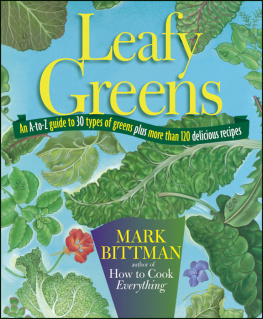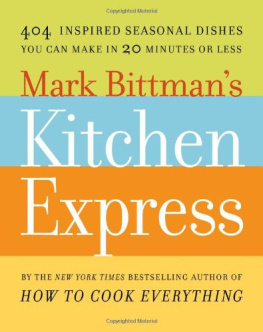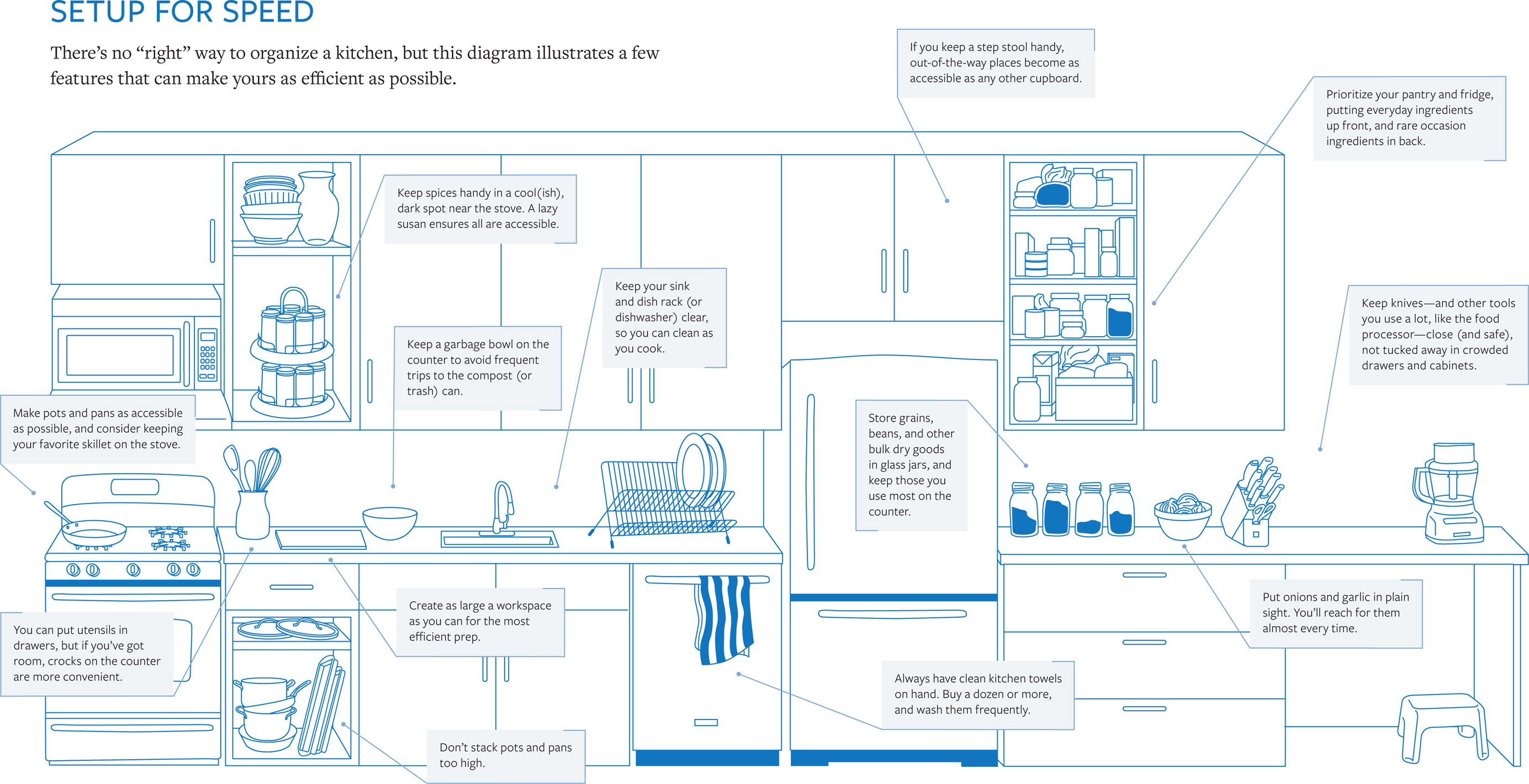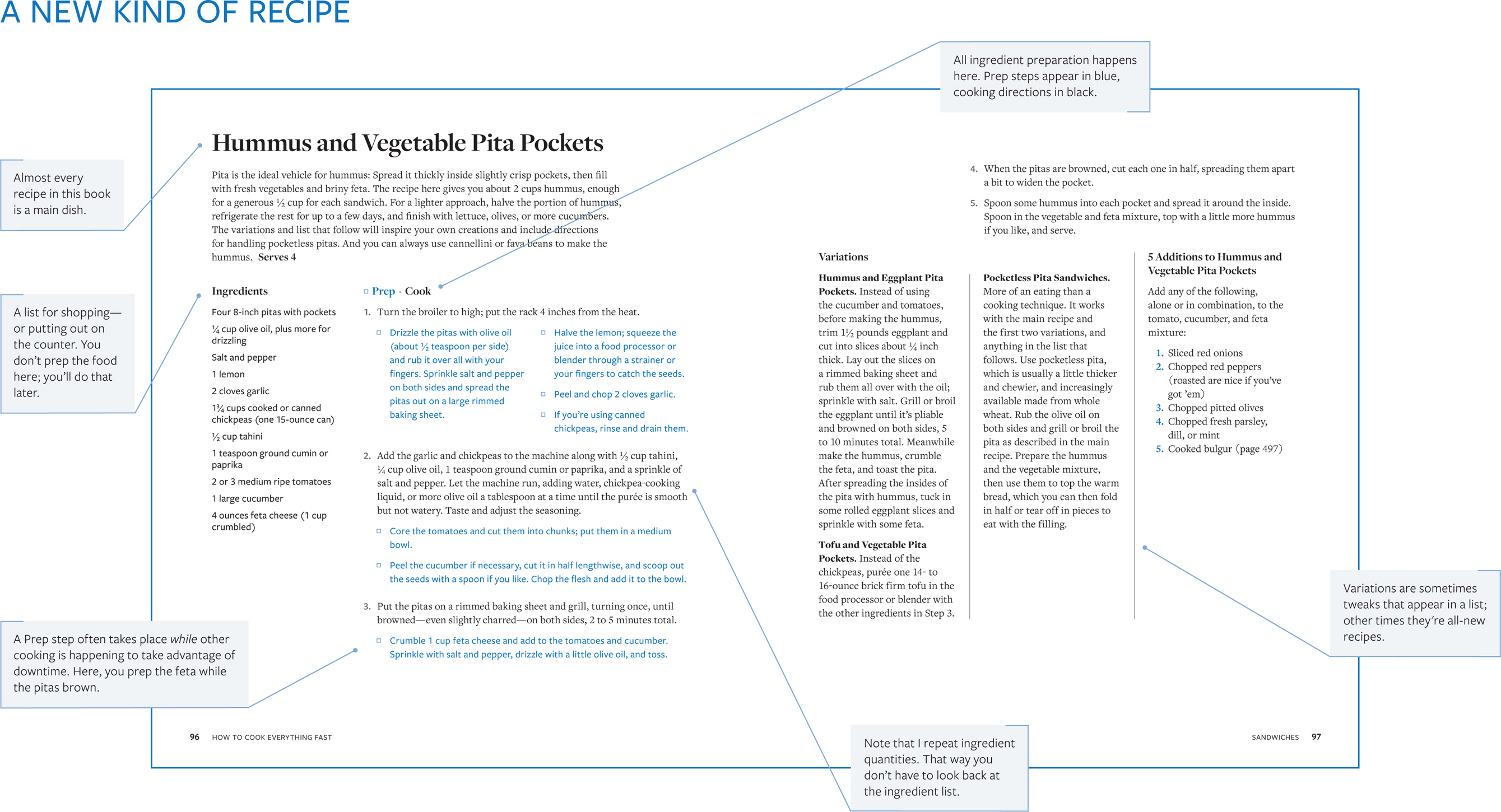Contents
Guide
Contents
The way we feed ourselves is always changing, evolving with the stages in our lives, the expanding availability of ingredients, and our knowledge of different preparation and cooking techniques.
As eaters weve become more sophisticated. Were learning to understand and appreciate global flavors and cooking traditions, while paying closer attention to where our food comes from and where its going in the future. We know what eating well is but dont always have the time to prepare meals at home, so we settle for some spin on eating fast.
Yet as I asserted in 2014 with the first edition of this book, cooking remains an essential human activity. It can relax us after long, stressful days, bring us closer to our families, and put a lifetime of nourishment and endless eating possibilities right at our fingertips. The trick is to get food on the table fasterand betterthan the abundance of restaurants and food companies jockeying to feed us.
Life may have become more complicated, but cooking can become simpler.
The fact is that you do have time to cook: You just need better recipes. Imagine a road map that captures the rhythm of the kitchen, where preparation and cooking happen seamlessly. Soup begins to simmer while you prepare more vegetables for the pot; oil shimmers in a skillet as you chop an onion; broiled meat rests while rice steams. This is naturally fast cooking, the kind experienced cooks do intuitively.
Fast cooking involves strategy not compromise. Here I take seemingly complicated dishes like wonton soup and chicken Parmesan and reduce them to their essentials, taking them apart and reconstructing them with all the flavors and textures you love about the originals. Smart, easy techniques, like cutting meat into smaller pieces for lightning-quick braises and harnessing the power of the broiler, give you all the pleasure of eating homemade meals with minimal work andperhaps more importanttime.
The result is delicious food prepared from real ingredientsquickly. There are plenty of shortcuts here, and for the most part they dont compromise flavor or texture. (When they do, theyre worth it.) As a practical purist, I open cans and boxes like everyone else, provided whats inside is nutritious and minimally processed. (Theres a of what qualifies as convenience food in this book; if youre already a How to Cook Everything fan, there wont be any surprises.)
This completely revised and updated How to Cook Everything Fast is both a series of strategies and a collection of innovative recipes that do the planning and organizing for you. And this time, photographs both inspire and provide additional details.
Whether youre a beginner hoping to learn how to weave homemade meals into your regular routine or an experienced cook looking to become more efficient, I can help you get where you want to beall in 30 minutes or less.
F ast doesnt have to mean frantic. If you use your head, cooking quickly can be pleasurable and rewarding. As with many skills, learning to be fluid, comfortable, and confident in the kitchen comes with practice. Here the lessons are built into the recipes, so you can just dive in and, without realizing it, hone your skills and become naturally more efficient whenever you cook.
REAL-TIME COOKING
The process of getting a home-cooked meal on the table involves four tasks: shopping, preparing, cooking, and cleaning up. Common wisdom would have you complete these steps linearly, finishing one before beginning the next. Shop. Unpack the groceries. Wash, trim, chop, slice, dice. Stand at the stove. Serve. Eat. Tackle the dishes.
But that approach ignores the natural rhythm of experienced cooks. For them, the action ebbs and flows within a span of time rather than to the beat of a ticking clock. While something simmers, roasts, or sauts, you have the flexibility to make a loop between counter, fridge, and stove, pause at the sink to wash some dishes, or work on making a salad. Efficiency comes when you put time on your side and maximize every minute.
This is real-time cooking, where gathering, preparing, and combining ingredients become one seamless endeavor. Its both faster and easier than the more common step-by-step process and embodies concepts that are not only fundamental to these recipes but applicable to all others. Embrace real-time cooking, and youll be looking at the components of cookingfood, tools, and techniquesfrom a completely different perspective.
Helping Hands
Too many cooks dont spoil the broth; some of the best moments in the kitchen involve sharing a countertop with family and friends. Even one extra set of hands can be a huge help. (If theres a youngster around whos willing and able, youll be spreading the joy into the next generation.) In fact these recipes are perfect for divvying up tasks among all your helpers; see .
Rethinking the Meal
Its not a new concept, but you can cook one dishlike pasta, salad, soup, or even eggsand call it dinner; or build a more substantial meal by adding simply executed snacks, sides, or desserts. So the bulk of the recipes in this book are for main courses that eat like meals, dishes that bring several components (such as meat, vegetables, and starches) together on one plate in ways that both retain their distinction and integrity and create a whole thats more than the sum of its parts.
To reflect the way Iand many othersare eating now, one big difference since the first edition of this book is the balance of meat to vegetables in these recipes. There are also a lot more vegetarian and vegan main dishes and variations.
If you have the inclination, you can make a snack to begin the meal or try a salad, vegetable, noodle, rice, or grain dish from .)
A well-stocked kitchen is the backbone of fast cooking; this section lists the staples to keep in your pantry, fridge, and freezer and provides a quick rundown of which time-saving ingredients are worth buying. Ive also included a substitution chart to inspire improvisation when you dont have (or dont fancy) a particular ingredient. And so you can vary both flavor profiles and key ingredients easily, many recipes include additional spinsvariationson the main recipe. But before you can cook, youve got to shop.
Shopping for Speed
The faster you shop, the sooner you get into the kitchen. Making a shopping list is an obvious advantage and worth reminding you about here; its easier to keep one perpetually going on your phone or an old-fashioned notepad than to create one from scratch every time you shop. Then try to strike a balance between spontaneous, impromptu shoppinglike stopping after work for fresh vegetables and meatand weekly or even biweekly stocking up. Since the most efficient scenario is to cook from what you already have at home as often as possible, the goal is to get in the habit of using short-storing foods first. The lists here will help you do that.
Every kitchen should have the foods in the charts that follow. Some, like salt and pepper, are common sense, while others are the kinds of instant flavor boosters that are essential for fast cooking, like soy sauce and real Parmesan cheese. Other flavor-packed ingredients (not absolute essentials but nice to have around) include olives, capers, anchovies, dried tomatoes, tahini, miso, and (of course) bacon.

